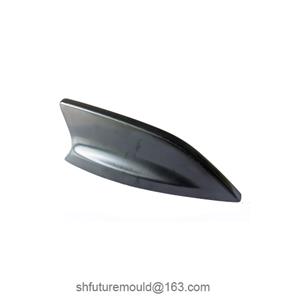Common Material Properties of Plastic Gears
The choice of plastic gear material directly affects the performance and lifespan of the gear. Below is an overview of commonly used materials and their characteristics:
1. Polyoxymethylene (POM, Acetal Resin)
Features:
High strength and hardness with excellent mechanical properties.
Low friction coefficient and good wear resistance, suitable for high-precision gears.
Strong dimensional stability and excellent creep resistance.
Outstanding fatigue resistance and chemical corrosion resistance.
Applications: Printer gears, home appliance transmission components, and precision instrument gears.
2. Nylon (PA, Polyamide)
Features:
High toughness, strong impact resistance, and excellent wear resistance.
Good self-lubrication properties, but moisture absorption needs to be improved (as it can affect dimensions and performance).
Can bear high loads, suitable for high-power transmission scenarios.
Glass fiber or lubricant additives can further enhance stiffness and wear resistance.
Applications: Automotive gears, industrial machinery gears, and toy transmission gears.
3. Polybutylene Terephthalate (PBT)
Features:
Excellent heat resistance and dimensional stability.
Low moisture absorption, suitable for precision gear applications.
Strong chemical resistance and good electrical properties.
Applications: Automotive components and precision gears in electronic devices.
4. Polycarbonate (PC)
Features:
High strength and toughness with excellent impact resistance.
High transparency, meeting specific aesthetic requirements.
Good dimensional stability but relatively poor wear resistance; often used in composite forms.
Applications: Transparent transmission components and small, low-load gears.
5. Glass Fiber Reinforced Polyamide (GF-PA)
Features:
Significant improvement in rigidity and heat resistance after adding glass fibers.
Good creep resistance, suitable for high-load, high-temperature environments.
Moisture absorption still requires attention, but the impact is relatively reduced after modification.
Applications: High-strength industrial gears and automotive transmission components.
6. Polyethylene (PE) and Ultra-High Molecular Weight Polyethylene (UHMWPE)
Features:
Extremely low friction coefficient and good wear resistance.
Strong impact resistance but relatively low hardness.
Excellent self-lubrication properties, suitable for specific transmission needs.
Applications: Low-speed transmission gears and gears for food machinery.
7. Polyarylamide (PARA)
Features:
High mechanical strength and chemical resistance.
Excellent heat resistance with low moisture absorption.
Good dimensional stability.
Applications: High-temperature, high-precision transmission applications.
8. Polyphenylene Sulfide (PPS)
Features:
Extremely high heat resistance, capable of continuous operation above 200°C.
Excellent chemical resistance and wear resistance.
Good dimensional stability with very low moisture absorption.
Applications: High-temperature, high-precision mechanical components and gears in electronic devices.
9. Polyether Ether Ketone (PEEK)
Features:
Ultra-high strength and hardness with exceptional heat resistance, tolerating temperatures up to 250°C.
Extremely low friction coefficient and excellent wear resistance.
Superior chemical stability, suitable for harsh environmental conditions.
Applications: High-performance gears in aerospace and medical equipment.




